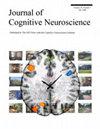Activation Pattern of Attentional Templates Affects Dual-target Search
IF 3
3区 医学
Q2 NEUROSCIENCES
引用次数: 0
Abstract
Neural activation of the target representation (template) facilitates attentional guidance, allowing humans to effectively perform visual search. However, visual search is not always very effective, especially when searching for multiple templates. The reduced search efficiency under dual-target compared with single-target searches is known as the dual-target cost and might be caused by decreased precision, increased resource consumption, or the switch cost between activated templates. The activation of templates and the underlying mechanism of multitarget visual search were explored in this study. In Experiments 1 and 2, participants searched for one or two targets under different precision requirements or memory loads, respectively. The results showed that the precision requirement, rather than resource consumption, influenced the dual-target cost. The impact mechanism of precision requirement was explored in Experiment 3 by measuring ERPs reflecting attentional selection and memory matching. The sustained posterior contralateral negativity, which reflects memory matching, was smaller in the dual-target search compared with the single-target search, especially under the low-precision requirement. The activation patterns of templates during the dual-target search were investigated in Experiment 4 using EEG decoding. Under the low-precision requirement, the matched template was activated subsequent to the unmatched template, whereas under the high-precision requirement, there was an overlap in the activation periods of the two templates during the template matching stage. These findings demonstrate that increasing the precision requirement of working memory keeps the activation of the template and promotes template matching. The dual-target cost might be attributed to the inappropriate template activation, which consequently hinders accurate matching with potential objects.注意模板激活模式对双目标搜索的影响。
目标表征(模板)的神经激活促进了注意力引导,使人类能够有效地进行视觉搜索。然而,视觉搜索并不总是非常有效,特别是在搜索多个模板时。与单目标搜索相比,双目标搜索效率的降低被称为双目标成本,这可能是由于精度降低、资源消耗增加或激活模板之间的切换成本造成的。本研究探讨了模板的激活和多目标视觉搜索的潜在机制。在实验1和实验2中,被试在不同精度要求和记忆负荷下分别搜索一个或两个目标。结果表明,影响双目标成本的不是资源消耗,而是精度要求。实验3通过测量反映注意选择和记忆匹配的erp来探讨精度要求的影响机制。反映记忆匹配的后侧持续负性在双目标搜索时比单目标搜索时更小,尤其是在低精度要求下。实验4采用脑电解码的方法研究了双目标搜索过程中模板的激活模式。在低精度条件下,匹配的模板在未匹配的模板之后被激活,而在高精度条件下,两个模板在模板匹配阶段的激活周期存在重叠。研究结果表明,提高工作记忆的精度要求可以保持模板的激活,促进模板匹配。双目标代价可能是由于模板激活不当,从而阻碍了与潜在目标的准确匹配。
本文章由计算机程序翻译,如有差异,请以英文原文为准。
求助全文
约1分钟内获得全文
求助全文
来源期刊
CiteScore
5.30
自引率
3.10%
发文量
151
审稿时长
3-8 weeks
期刊介绍:
Journal of Cognitive Neuroscience investigates brain–behavior interaction and promotes lively interchange among the mind sciences.

 求助内容:
求助内容: 应助结果提醒方式:
应助结果提醒方式:


